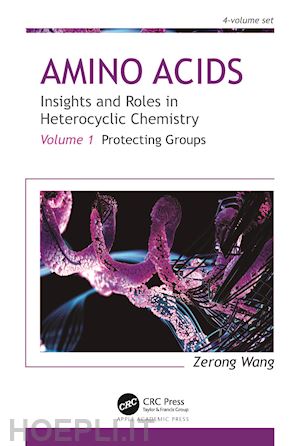Zerong Wang, PhD, is a full Professor at the University of Houston-Clear Lake, Texas. Prior to that, he worked at the Institute for Biological Sciences of the National Research Council of Canada for several years. Through his career, the author has gained specific training and expertise in organic chemistry, particularly in physical organic chemistry and other subdisciplines that include photochemistry, spectroscopies, carbohydrate chemistry, sulfur chemistry, nucleosides and heterocycles, material science, reaction methodology, computational chemistry, among other. Dr. Wang has developed research projects relating to sulfur chemistry, computational chemistry, nucleoside analogs, heterocycle chemistry, materials science, and macromolecules (pillarene, calix[n]arene, and melamine-based dendrimers, etc.) and has received 22 research grants, including from NSF-MRI, NSF-STEM, Welch Research Grant, Welch Departmental Research Grant, and University of Houston-Clear Lake’s Faculty Research and Support Fund (FRSF) Grants. The author has developed two compendiums in organic chemistry: Comprehensive Organic Named Reactions, with Detailed Mechanism Discussions and Updated Experimental Procedures (3 volumes) (Wiley, 2009) and Encyclopedia of Physical Organic Chemistry (6 volumes) (Wiley, 2017), the PROSE Award winner in 2018. While conducting research activities, the author also teaches courses for both graduate and undergraduate students. To date, the author has taught courses on General Chemistry, General Chemistry Laboratory, Analytical Chemistry, Quantitative Chemical Analysis, Forensic Chemistry, Organic Chemistry, Organic Chemistry Laboratory, Advanced Organic Chemistry, Physical Organic Chemistry, Synthetic Organic Chemistry, Organometallic Chemistry, Biochemistry, Biochemistry Laboratory, Polymer Chemistry, Introduction to Chemical Engineering, Nutrition and Diet Chemistry, Green Chemistry, Introduction to NMR Spectroscopy, Chemistry Seminar, Graduate Research, and Chemistry for Non-Science Majors. Dr. Wang earned his BS degree in Chemistry from Lanzhou University, PR China, and earned his MS and PhD degrees from the Shanghai Institute of Organic Chemistry, Chinese Academy of Sciences. He conducted his postdoctoral research at the Department of Chemistry, University of California Berkeley and York University (Canada).











